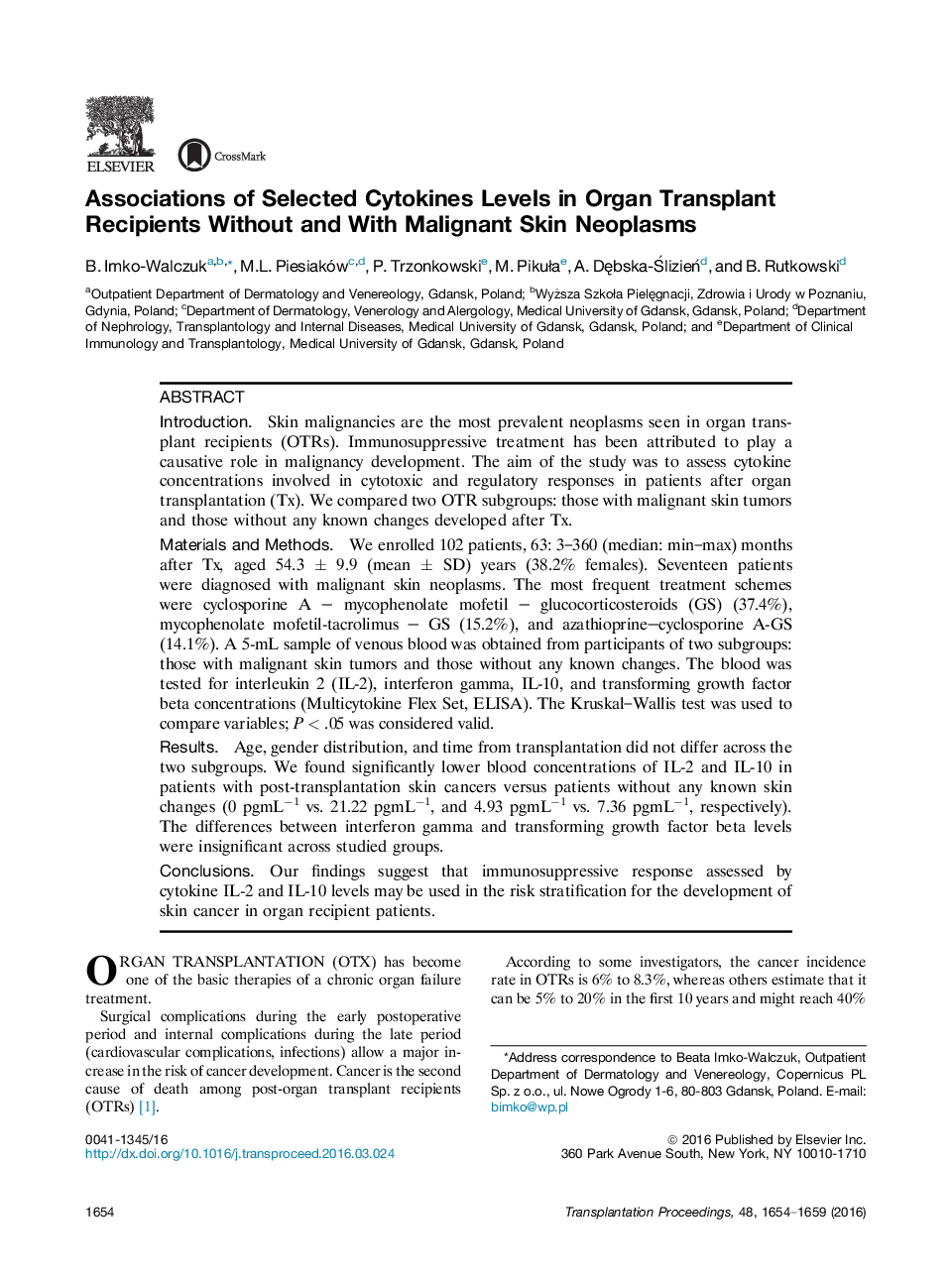| Article ID | Journal | Published Year | Pages | File Type |
|---|---|---|---|---|
| 4256092 | Transplantation Proceedings | 2016 | 6 Pages |
•There are different immunosuppressive responses in organ transplant recipients (OTRs) with and without skin cancers.•In the OTR group, special oncological approach must be taken.•Interleukin-2 blood levels in OTRs seem to be useful markers of skin cancer development.
IntroductionSkin malignancies are the most prevalent neoplasms seen in organ transplant recipients (OTRs). Immunosuppressive treatment has been attributed to play a causative role in malignancy development. The aim of the study was to assess cytokine concentrations involved in cytotoxic and regulatory responses in patients after organ transplantation (Tx). We compared two OTR subgroups: those with malignant skin tumors and those without any known changes developed after Tx.Materials and MethodsWe enrolled 102 patients, 63: 3–360 (median: min–max) months after Tx, aged 54.3 ± 9.9 (mean ± SD) years (38.2% females). Seventeen patients were diagnosed with malignant skin neoplasms. The most frequent treatment schemes were cyclosporine A — mycophenolate mofetil — glucocorticosteroids (GS) (37.4%), mycophenolate mofetil-tacrolimus — GS (15.2%), and azathioprine—cyclosporine A-GS (14.1%). A 5-mL sample of venous blood was obtained from participants of two subgroups: those with malignant skin tumors and those without any known changes. The blood was tested for interleukin 2 (IL-2), interferon gamma, IL-10, and transforming growth factor beta concentrations (Multicytokine Flex Set, ELISA). The Kruskal–Wallis test was used to compare variables; P < .05 was considered valid.ResultsAge, gender distribution, and time from transplantation did not differ across the two subgroups. We found significantly lower blood concentrations of IL-2 and IL-10 in patients with post-transplantation skin cancers versus patients without any known skin changes (0 pgmL−1 vs. 21.22 pgmL−1, and 4.93 pgmL−1 vs. 7.36 pgmL−1, respectively). The differences between interferon gamma and transforming growth factor beta levels were insignificant across studied groups.ConclusionsOur findings suggest that immunosuppressive response assessed by cytokine IL-2 and IL-10 levels may be used in the risk stratification for the development of skin cancer in organ recipient patients.
